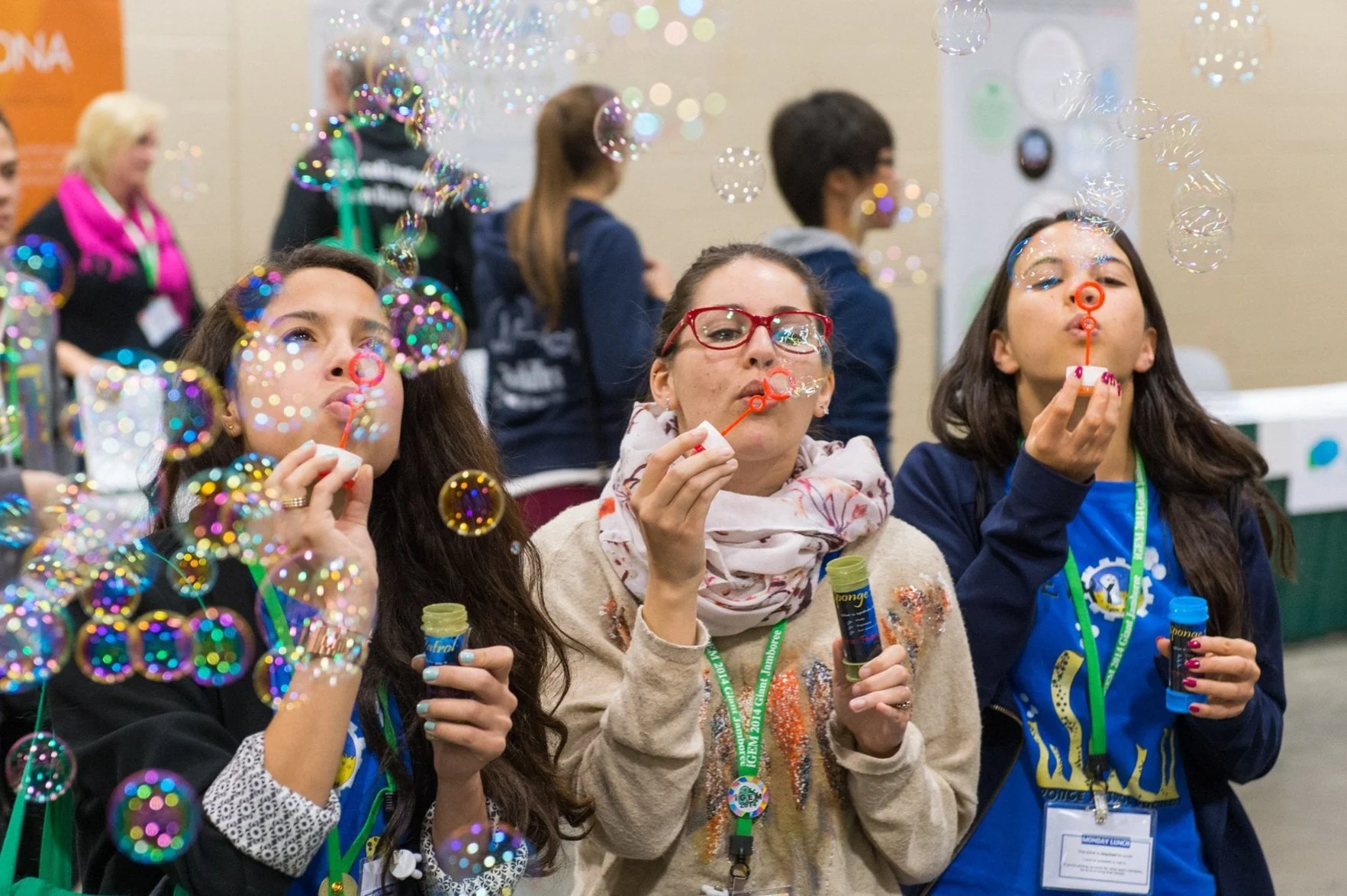Synthetic biology for peaceful uses of outer space
“Exploration is in our nature. We began as wanderers, and we are wanderers still. We have lingered long enough on the shores of the cosmic ocean. We are ready at last to set sail for the stars.”
Ever since I worked on the Astroshield project with my teammates on the Sao_Carlos-Brazil 2019 iGEM team, I’ve been fascinated with how synthetic biology applied to space exploration can yield important insights for making life better here on Earth. That’s why I jumped at the opportunity to represent iGEM at the 60th Scientific and Technical Subcommittee (STSC) of the Committee on the Peaceful Uses of Outer Space (COPUOS), held February 6-10, 2023 in Vienna, Austria.
COPUOS was set up by the UN General Assembly in 1959 to govern the exploration and use of space for the benefit of all humanity: for peace, security and development. The STSC is chiefly focused on applied projects UN member states are conducting within the Committee’s framework, as well as promoting general discussions that are pertinent to the topic of the peaceful uses of outer space.
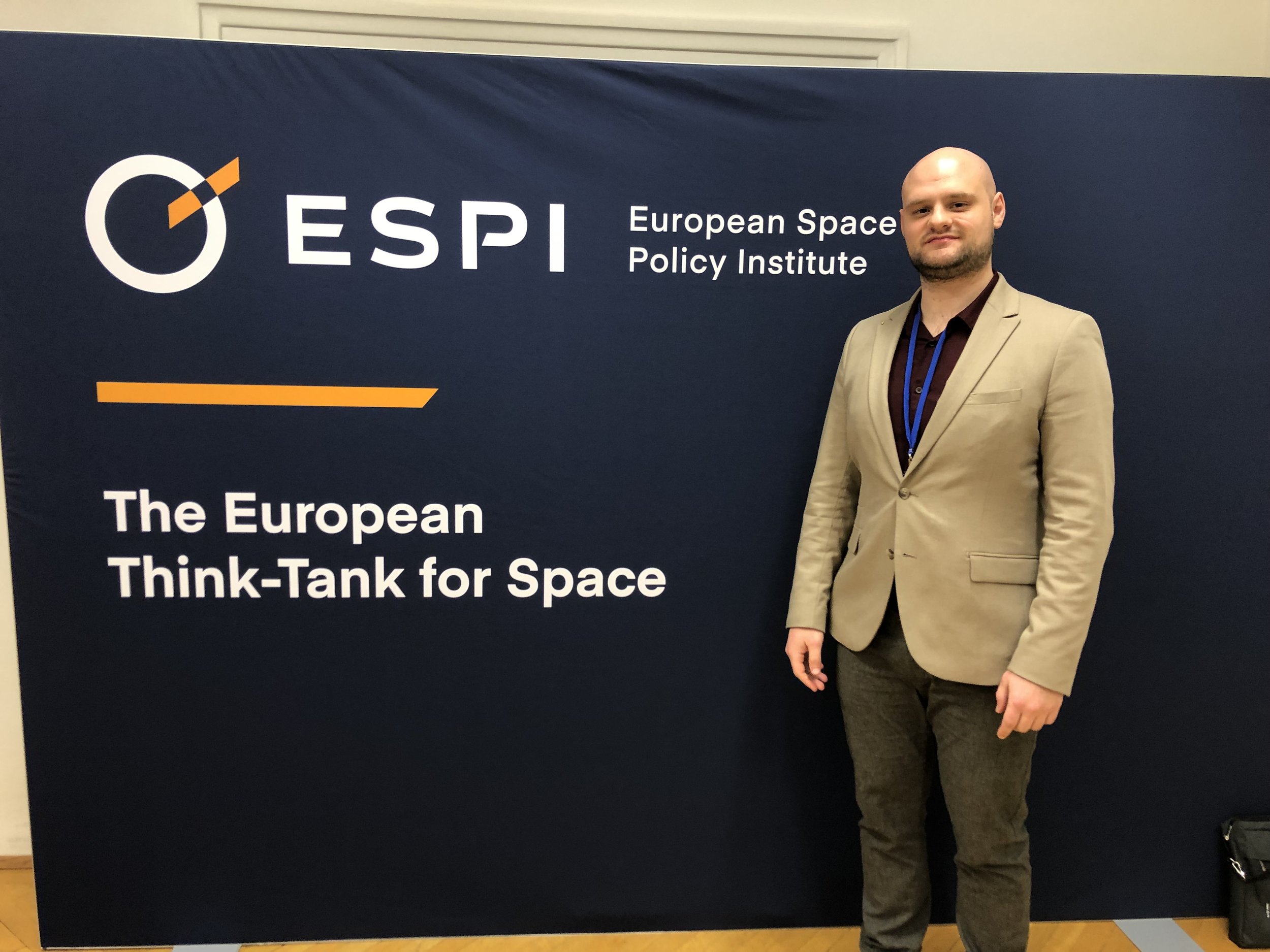
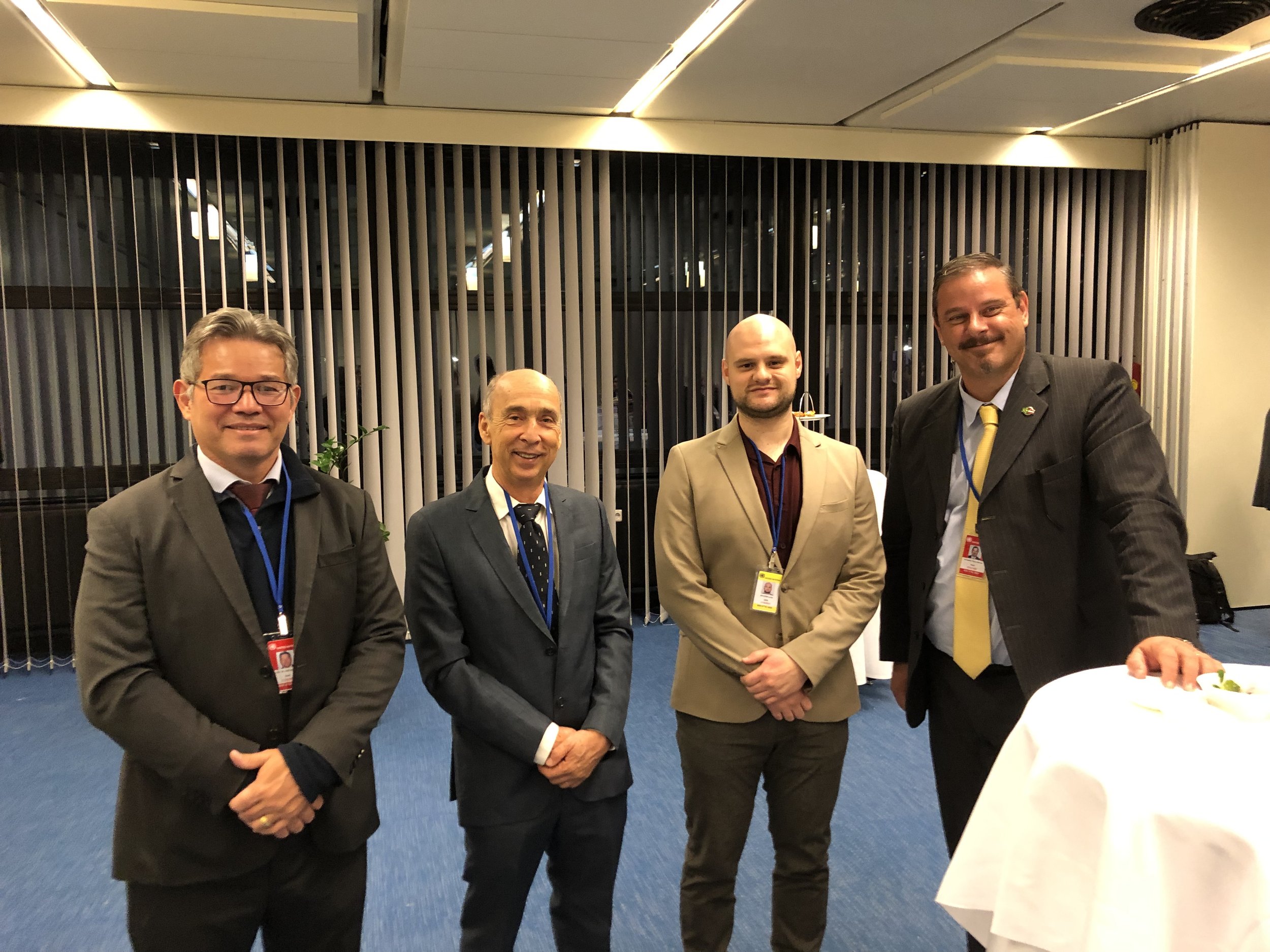

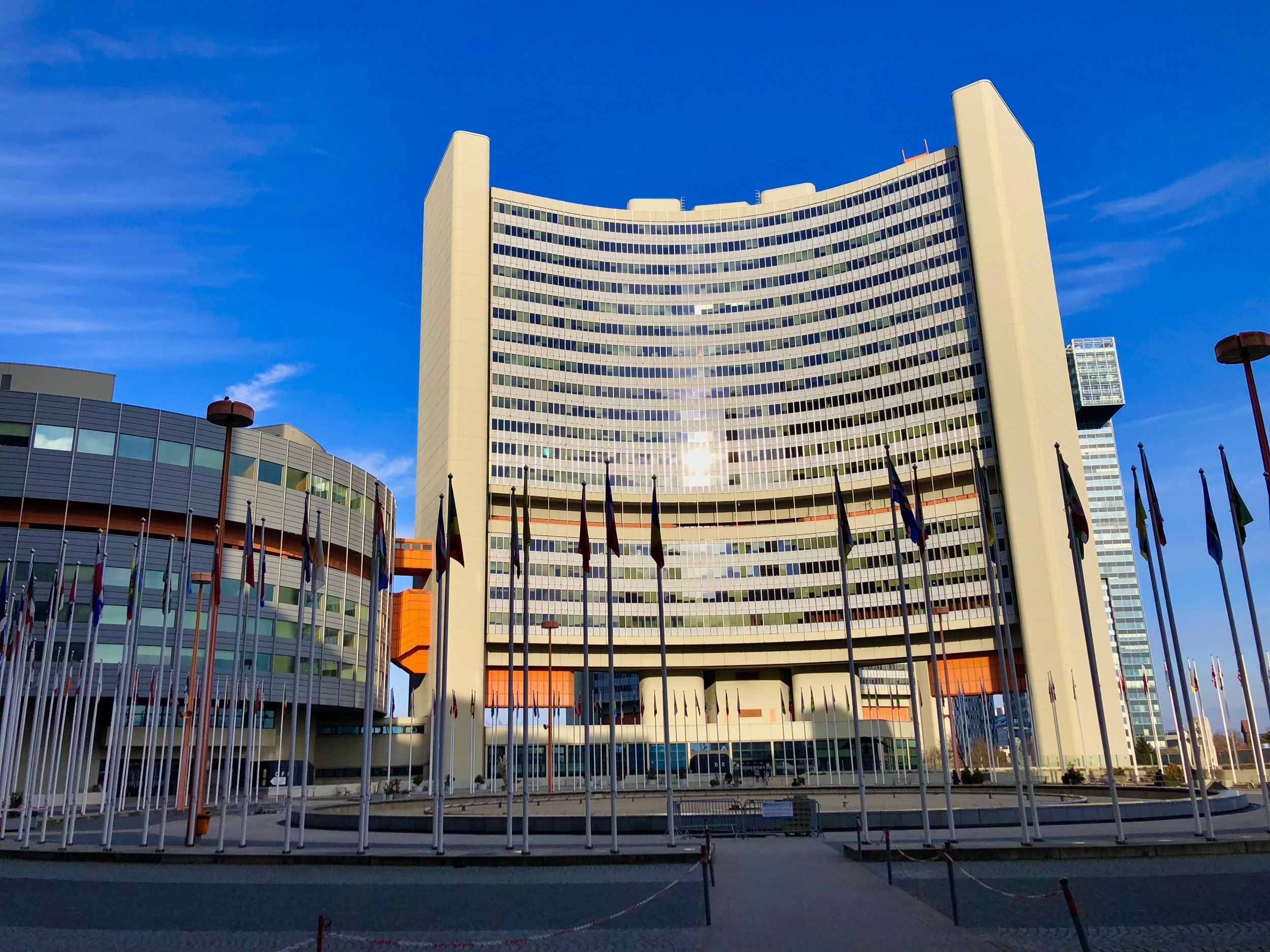
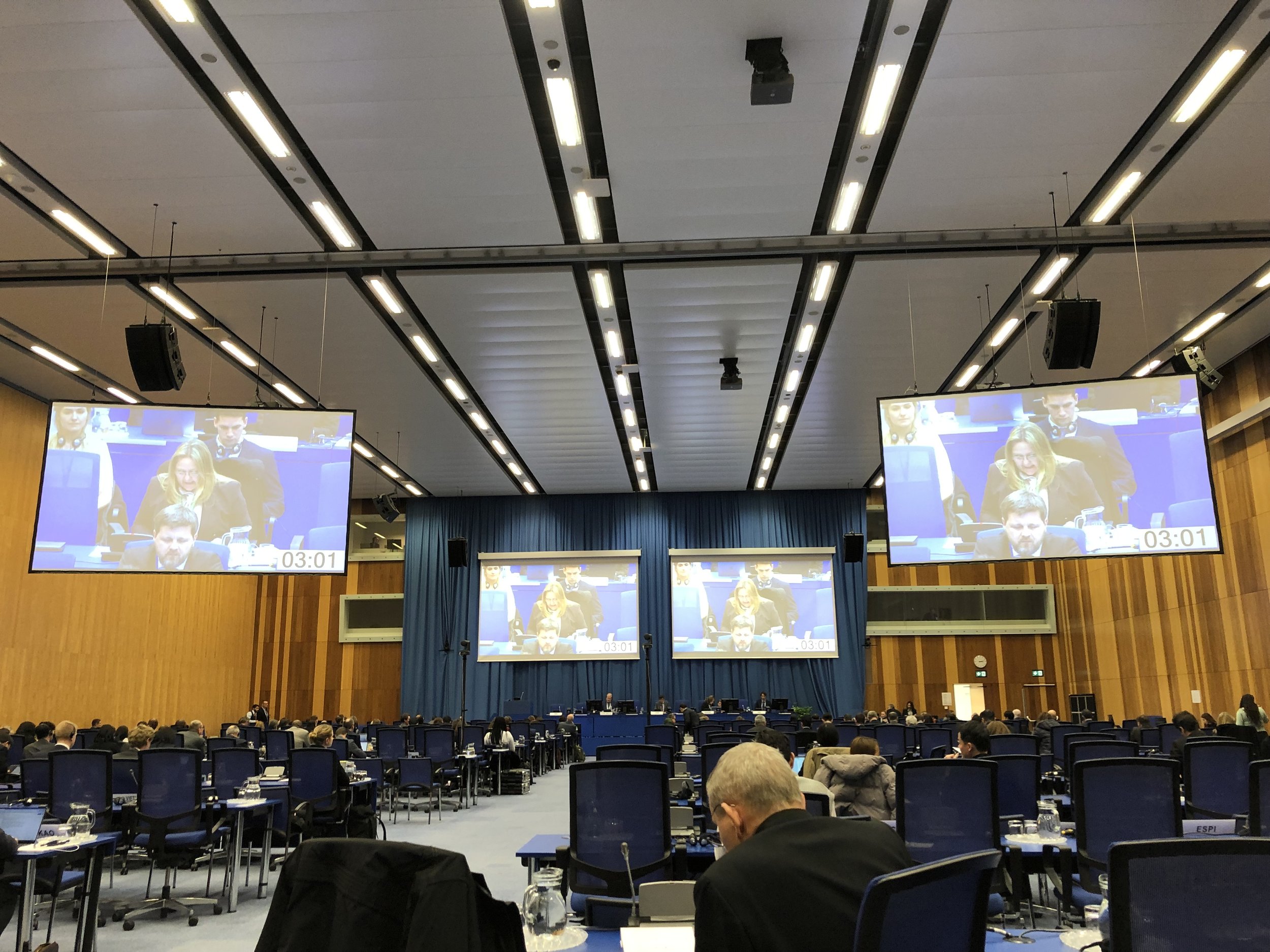
Many thought leaders have looked to space for humanity’s future. As expressed by Carl Sagan, “The Earth is the cradle of humanity, but mankind cannot stay in the cradle forever.” This quote emphasizes the idea that while Earth has been the birthplace of human civilization, it may not be able to sustain us indefinitely. Factors such as climate change, overpopulation, and resource depletion pose significant challenges to our survival as a species.
To address these challenges, Sagan and others believe it is crucial for humanity to become a multi-planetary species. In other words, humanity should aim to establish colonies and settlements on other planets and moons in our solar system and beyond. This would not only provide a backup plan in case of catastrophic events on Earth, but would also open up new opportunities for exploration, discovery, and scientific advancement.
“Synthetic biology could provide many of the key technologies humanity would need to create self-sustaining colonies in other celestial bodies, including the air we breathe, the food we eat, and the protection we need from the harsh conditions of space.”
I felt it important to represent iGEM at the 60th STSC of COPUOS to understand how much synthetic biology is talked about in the space sector, and also to present the work done by iGEM teams in applying synthetic biology to space exploration.
I was surprised to learn that there was almost no focus on life sciences in any of the main sessions, side events and technical presentations. Given that almost all major players in the space sector were represented at the event, it is clear that synthetic biology is still not a ‘hot topic’ in the field. Upon talking with several of the attendees, I came to understand that synthetic biology is not widely known or cherished amongst space players, not because it is actively neglected, but due to a lack of outreach. Most of the people I spoke with had never heard of iGEM before, and were extremely interested in learning about the iGEM Competition and related programs.
iGEM has a long history of applying synthetic biology to problems posed by space exploration – from the need for oxygen and renewable food sources, to protection from extreme cold and stratospheric radiation. Since 2009, when Tokyo_Tech became the first iGEM team to apply synthetic biology to space exploration, the number of iGEM teams conducting projects focused on space exploration has been consistently increasing.
Here are some of the highlights:
Tokyo_Tech 2009 (Japan) engineered an iron-oxidizing bacteria that could potentially survive the harsh conditions on Mars and play an important role in terraforming Mars. Gold Medalist.
Brown-Stanford 2011 (United States) developed “PowerCell” as a universal energy source from engineered cyanobacteria, which generate carbon and nitrogenous nutrients from sunlight and air and secrete them to sustain other microbes. Gold Medalist, Best New Application.
Image from: https://www.nasa.gov/centers/ames/engineering/projects/powercell
In 2018, PowerCell was sent to space aboard a DLR satellite to investigate the performance of microbial mini-ecologies containing both photosynthetic microbes and consumer organisms!
UNIK_Copenhagen 2015 (Denmark) created “SpaceMoss” that expresses an antifreeze protein to help it survive low temperatures, and the antioxidant Resveratrol that would be useful as a medical supplement to astronauts. Gold Medalist.
Calgary 2017 (Canada) engineered “AstroPlastic” to turn human fecal matter into biodegradable plastic that can be 3D printed, which could be used in space to generate items useful to astronauts. Gold Medalist.
Image from: https://2017.igem.org/Team:Calgary
The Calgary 2017 iGEM team was selected by Students for the Exploration and Development of Space (SEDS Canada) to test their experiments in zero gravity!
Exeter 2018 (United Kingdom) designed a perchlorate reducing bioreactor that could be integrated into existing life support systems, providing breathable oxygen. Gold Medalist.
UCopenhagen 2018 (Denmark) engineered “PharMARSy”, a portable 3D-printed system that combines protein synthesis and purification for on-site production of medications needed by astronauts during space travel. Gold Medalist and winner of the Judges Award and iGEMers Choice Award from Nordic iGEM Conference.
Sao_Carlos-Brazil 2019 (Brazil) developed “Astroshield” by engineering a UV-resistant yeast strain that could allow future colonizers of Martian lands to produce ethanol and bread, and also could improve the efficiency of fermentation processes on Earth. Silver Medalist.
The Sao_Carlos-Brazil 2019 team conducted stratospheric assays at high altitude.
Toulouse_INSA-UPS 2020 (France) designed a quasi-autonomous coculture between the bacterium Clostridium ljungdahlii and the yeast Saccharomyces cerevisiae to provide a food supplement rich in proteins and vitamins. Gold Medalist, First Runner Up for the Grand Prize, Undergrad Division.
BUCT-China 2021 (China) created biological scaffolding materials that could be used with 3D printing and tissue engineering technology to produce cultured meat as a food source in space. Gold Medalist.
Duesseldorf 2022 (Germany) engineered bacteria to produce a 3D-printable bioink made out of alginate and cellulose, that could enable astronauts to manufacture what they need in space. Gold Medalist.
Hopkins 2022 (United States) engineered root cells that grow directionally in gradient magnetic fields to enable plant growth in microgravity during spaceflight and enhance nutritional outcomes for astronauts. Gold Medalist, Nominee for Best Plant Synthetic Biology.
This year for the first time, there will be a village dedicated to space projects in iGEM. I’m excited about the possibilities that lie ahead for iGEM teams applying synthetic biology to space exploration, and can’t wait to see what the teams will do in 2023!
Please reach out to me at lucas [AT] igem [DOT] org if you are interested in collaborating with iGEM on the many cool synthetic biology projects for space exploration or participating in the Grand Jamboree this coming November!






